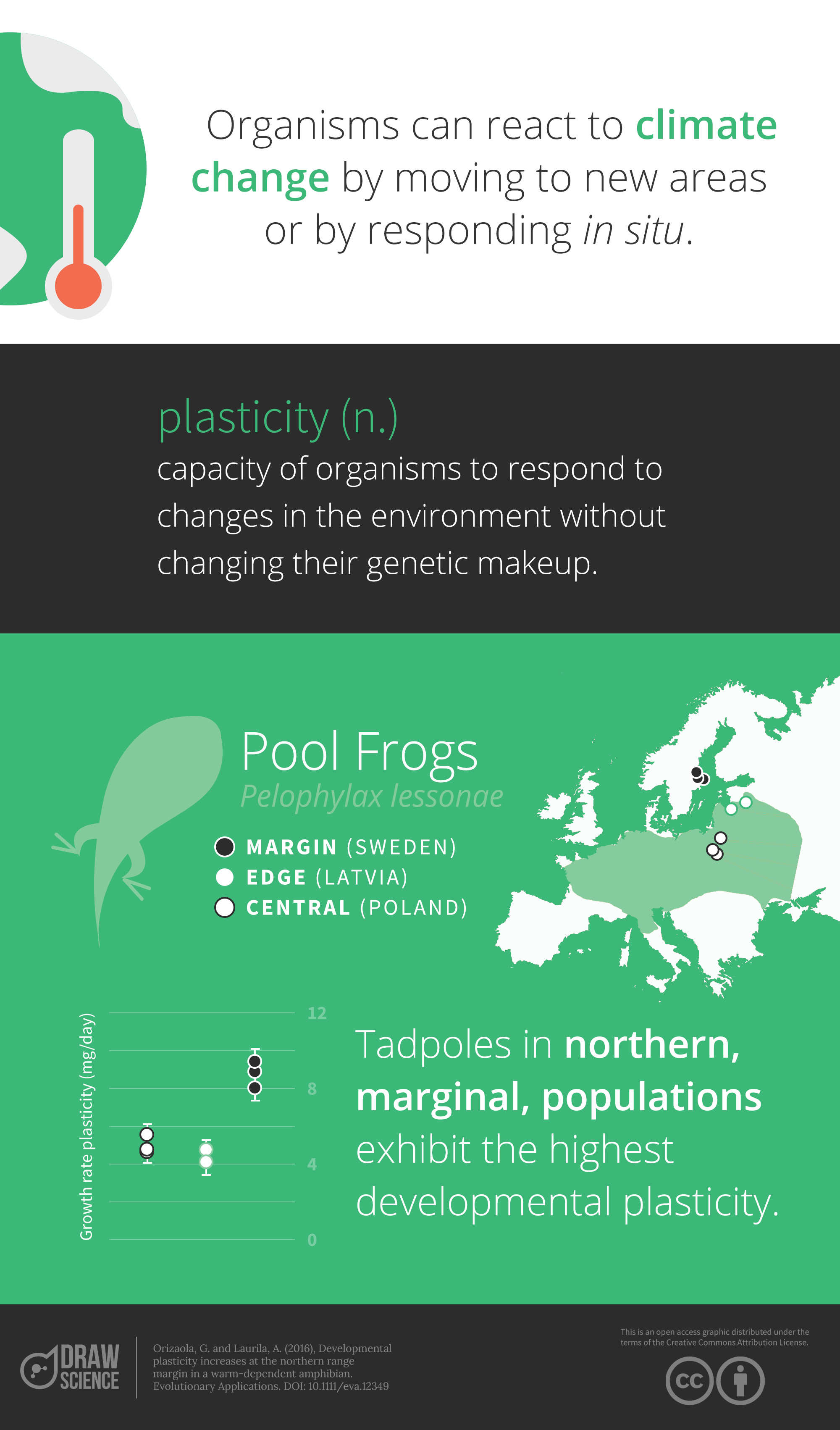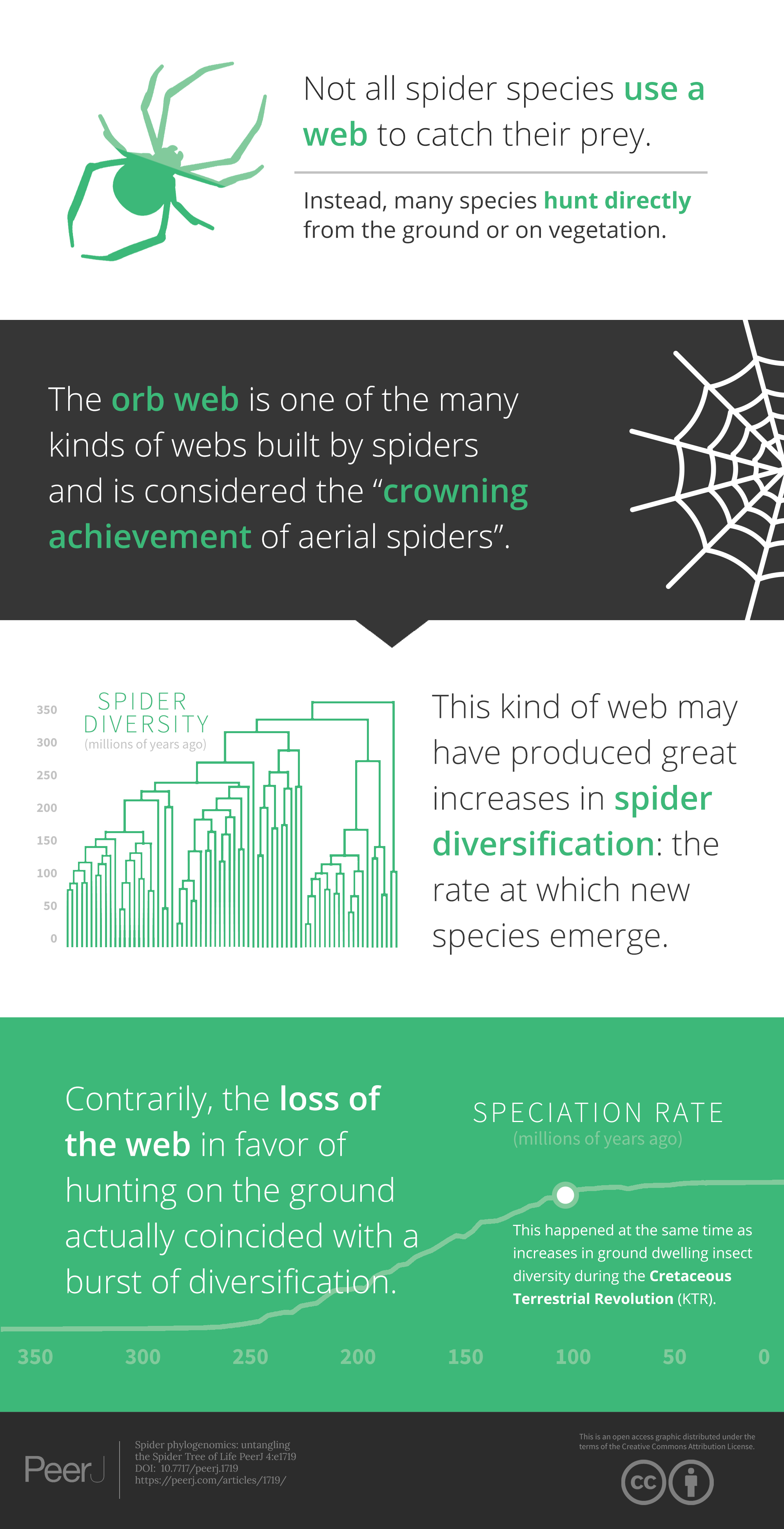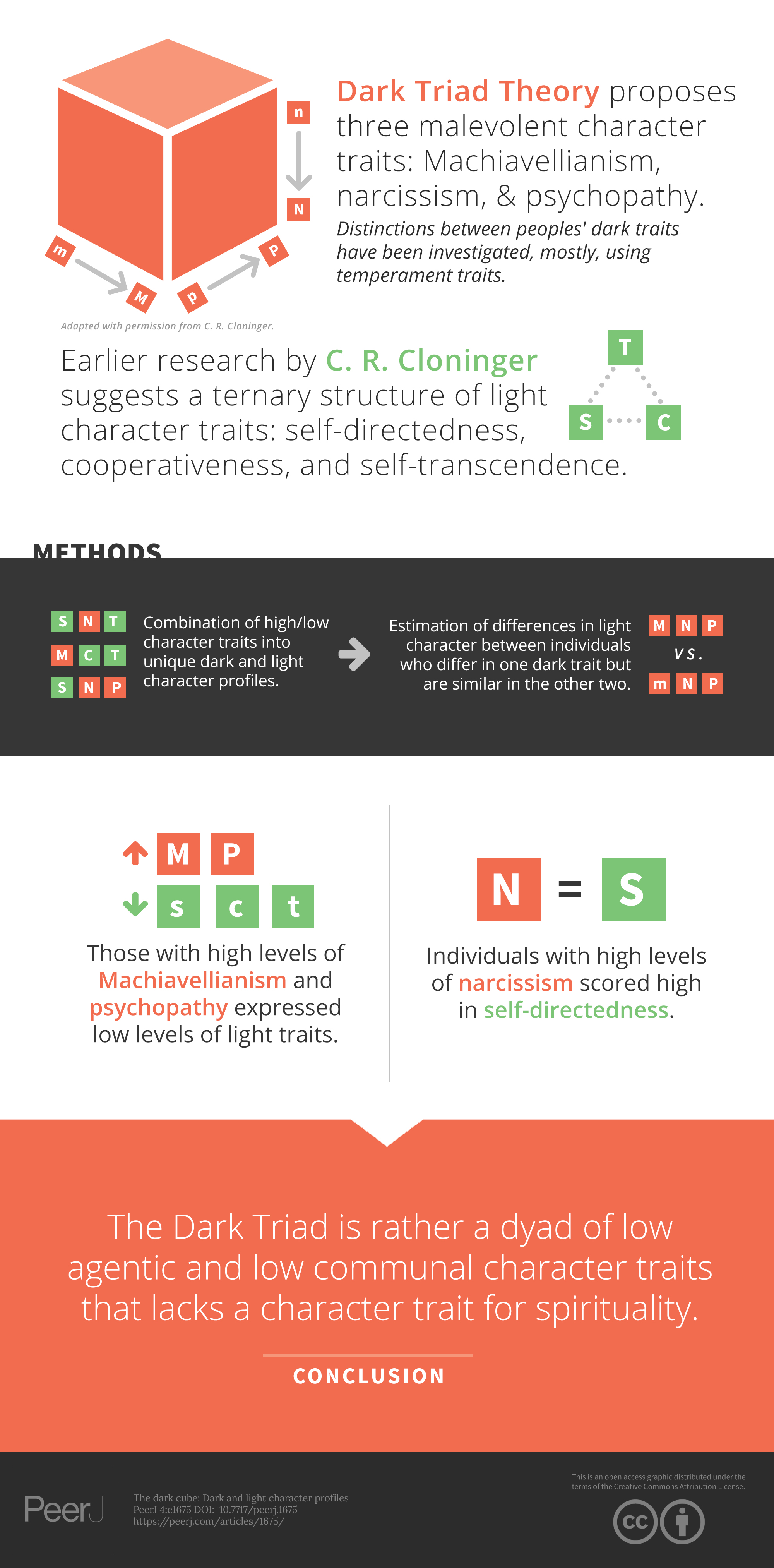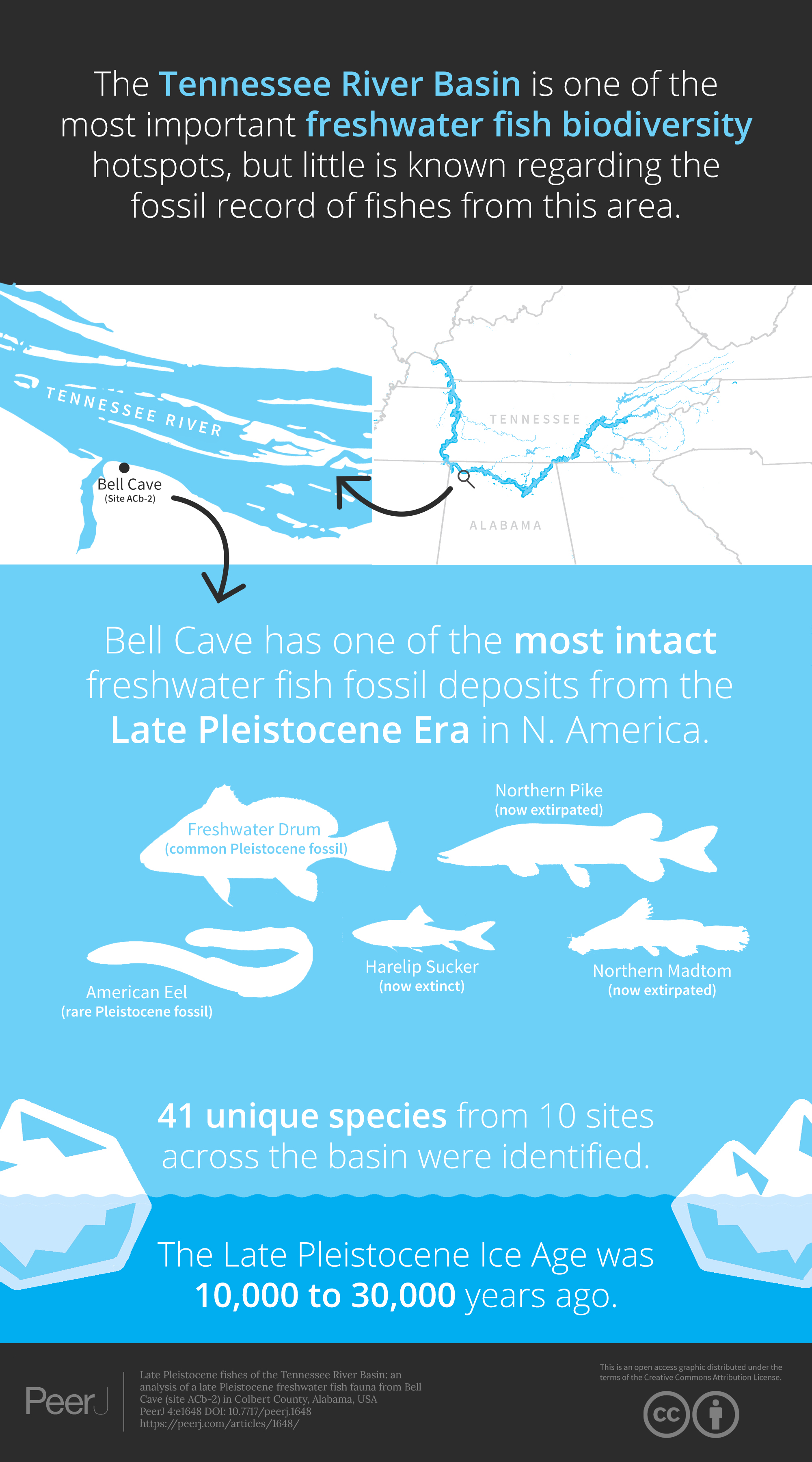Graphics
DOI-assigned graphical abstracts created & published by PubDraw.
Plasticity in European pool frogs
Organisms can respond to climate change threats by moving to new areas or by responding in situ to the new environmental conditions. Plasticity, the capacity of organisms to respond to changes in environment by adjusting their phenotypes to the new conditions without changing their genetic composition, can be crucial for responding to climate change. This study reveals the maintenance of high levels of developmental plasticity in isolated, marginal populations, suggesting that they may be better able to respond to environmental change than often predicted.
Loss of the web & spider diversification
Spiders are an incredibly ancient and diverse group of arthropods comprising over 45,000 described species; by all counts they are the largest known animal group that is exclusively predatory. They build many different kinds of webs: orb, sheet, tube, tangle….but many species don’t build a web at all and instead hunt them directly from the ground or on vegetation. The orb web, the spiral wheel-shaped web made by many spider species, has been considered “the crowning achievement of aerial spiders” by evolutionary biologists. This achievement could may have produced an explosion in diversification (i.e. the “speed” at which new spider spcecies emerged through time). Using a snapshot of expressed genes from the messenger RNA in spider species representing a behaviorally diverse subset of spider families, we tested this hypothesis. Losing the aerial orb web in favor of hunting on the ground coincided with a tremendous burst of speciation in spiders. This appears to have happened about the same time as increases in ground dwelling insect diversity during the Cretaceous Terrestrial Revolution (KTR).
Defining & improving sandboxes
Sandboxing is a software security sub-discipline that doesn't have a specific definition. By studying a large dataset of papers within the sandboxing discipline, researchers first established a definition for the term. However, the study also found areas for improvement within the discipline: (1) the arguments researchers present are often ad hoc and (2) sandbox usability is mostly uncharted territory. We propose ways to structure arguments to ensure they fully support their corresponding claims and suggest lightweight means of evaluating sandbox usability.
Iflaviruses hitchhike in baculoviruses
Iflaviruses are small RNA viruses that infect caterpillars and are transferred vertically, from parent to offspring. Baculoviruses, on the other hand, infect and kill caterpillars to release more virus particles for horizontal transmission. These infectious particles are protected by protein occlusion bodies (OBs). In co-infected hosts, iflaviruses use baculovirus OBs to achieve horizontal transmission.
The Dark Triad is actually a dyad of dark traits
Current notions of people’s malevolent or dark character suggest three distinct traits: Machiavellianism, narcissism, and psychopathy. However, using dark profiles (i.e., individuals combination of these three dark traits) rather than linear statistics, we here demonstrate that the individuals who are high in Machiavellianism and psychopathy share a unified non-agentic and uncooperative character (i.e., irresponsible, low in self-control, unempathetic, unhelpful, untolerant), while individuals high in narcissism have a more unique character configuration expressed as high agency and, when the other dark traits are high, highly spiritual but uncooperative. In other words, based on differences in their associations to the light side of character (i.e., a ternary construct: self-directedness, cooperativeness, and self-transcendence), the Dark Triad seems to be a dyad rather than a triad.
Late Pleistocene freshwater fish in Bell Cave
The Tennessee River Basin is one of the most important freshwater fish biodiversity hotspots, but little is known regarding the fossil record of fishes from this area. This study fills in the zoological history through the identification, processing, and reporting of 41 unique species from 10 sites that span the entire basin over the last part of the Pleistocene ice age (10,000 to 30,000 years ago). This study represents one of the most comprehensive descriptions of North American late Pleistocene fishes and provides evidence of early assemblage structure, several extirpation events resulting from ice sheet recession, and little known extinct taxa.





